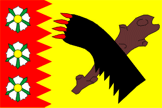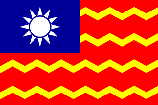![[Seal of US state of Georgia]](../images/v/vxt-d287.gif)
![[Seal of US state of Minnesota]](../images/v/vxt-d287a.gif)
![[Seal of US state of Utah]](../images/v/vxt-d2520.gif)
![[Seal of City of Bakersfield]](../images/v/vxt-d1314a.gif)
![[Seal of US state of Minnesota]](../images/v/vxt-d1274.gif)
State Seal of Georgia, Minnesota, and Utah and the municipal seal of Bakersfield, US (fotw, official and
Wikipedia); Seal of
Subotica, Serbia (fotw)
Please note, that whilst a seal originally showed the user’s badge or parts of their armorial bearings (and was used to create an impression on wax or lead), when seen on flags today it is generally not (particularly in US usage) a coat of arms as defined herein (see also ‘anti-heraldry’).
![[Utah, US]](../images/v/vxt-d602.gif)
![[Missouri, US]](../images/v/vxt-d602a.gif)
![[Kentucky, US]](../images/v/vxt-d602b.gif)
![[Seal of US Dept of Energy]](../images/v/vxt-d2140.gif)
![[Seal of US state of Minnesota]](../images/v/vxt-d1274a.gif)
From left: Flag of Utah, US (fotw); Flag of
Missouri, US (fotw); Flag of Kentucky, US (fotw);
Flag of the Dept of Energy, US (fotw); Flag of Subotica, Serbia (fotw)
Notes
a) This term has been introduced by the Editors since
no established alternative could be found.
b) In US usage flags of his type are often derived from
previously established military colours.
![[Seal of US state of Florida]](../images/v/vxt-d2340.gif)
![[Seal of US state of Utah]](../images/v/vxt-d2341.gif)
![[Seal of US state of Minnesota]](../images/v/vxt-d287a.gif)
Seals of the States of Florida, Utah and Minnesota, US (FOTW and Wikipedia)
![[Morocco]](../images/v/vxt-d1049.gif)
![[Morocco]](../images/v/vxt-d1049a.gif)
National flag and Emblem of Morocco (fotw)
2) As above, but the term may include flags bearing a coat of arms rather than a seal – see ‘armorial flag’.
![[New Hampshire, US]](../images/v/vxt-d346a.gif)
![[Idaho, US]](../images/v/vxt-d346b.gif)
![[Minnesota, US]](../images/v/vxt-d2521.gif)
![[New York, US]](../images/v/vxt-d346c.gif)
Flag of
New Hampshire, US (fotw); Flag of
Idaho, US (fotw); Flag of
Minnesota, US (fotw); Flag of
New York, US (fotw)
![[second colour]](../images/v/vxt-d2363.gif)
Second/Regimental Colour of the Governor General’s Foot Guards, Canada (Official Website)
2) See ‘gyronny’.
![[sectors example]](../images/v/vxt-d1020a.gif)
![[sectors example]](../images/v/vxt-d1020b.gif)
Roundels of The Czech Republic and
Jordan (fotw)
![[sector flag example]](../images/v/vxt-d472.gif)
Sector/Registration flag, One Department of Rochefort, France (fotw)
2) In vexillology a term that may be used in place of the heraldic “gyronny” when a charge or field is divided into sections in (usually) alternating or different shades/colours meeting at a central point – but see ‘gyronny’.
![[sectored example]](../images/v/vxt-d1021a.gif)
![[sectored example]](../images/v/vxt-d1021b.gif)
From left: Flag of
Gornji Grad, Slovenia (fotw); Symbol of the
Ratana faith, New Zealand (fotw)
![[seeded example]](../images/v/vxt-d1425.gif)
![[seeded example]](../images/v/vxt-d1426.gif)
![[seeded example]](../images/v/vxt-d944c.gif)
![[seeded example]](../images/v/vxt-d1427.gif)
Flag of Haguenau, France (fotw); Flag of
Lochristi, Belgium (fotw); Flag of
Broye, Switzerland (fotw); Flag of
Les Ecasseys, Switzerland (fotw)
Please note that botany draws a distinction between the stamen and seedpods of a rose or other flower, whereas English heraldry does not.
![[segmented example]](../images/v/vxt-d1408.gif)
Flag of Mollis, Switzerland (fotw)
![[segreant example]](../images/v/vxt-d1080.gif)
Military Crest of Michigan, US (fotw)
![[semaphore positions]](../images/v/vxt-d289.gif)
Positions in Semaphore (Jim Croft)
Please note with regard to 2), in British RN usage ships hoisted a designated semaphore flag to indicate that they were about to make a signal by means of the mechanical semaphore system.
![[a semy flag]](../images/v/vxt-d1537.gif)
![[semy]](../images/v/vxt-d1409a.gif)
![[a semy flag]](../images/v/vxt-d1409b.gif)
![[a semy flag]](../images/v/vxt-d2590a.gif)
![[a semy flag]](../images/v/vxt-d2590.gif)
Banner of France c1200 – c1350 (fotw); National Flag of France 1814 – 1830 (fotw); Arms and Flag of
Zumberak, Croatia (fotw); Former Arms and Flag of Alvalade, Portugal (Sérgio Horta)
Please note that in vexillology the term may be used even if the number and disposition of the charges are strictly determined as in, for example, the US national jack.
![[a semy flag]](../images/v/vxt-d1539.gif)
Traditional Jack, US (fotw)
![[a semy flag]](../images/v/vxt-d1204.gif)
Flag of Dully, Switzerland (fotw)
Notes
a) The word semeion had a broad range of meanings in classical
Greek all roughly corresponding to “sign” (see also ‘signum’) and it is accordingly
suggested that the definition given above (whilst based on written sources) must be considered to some
degree conjectural.
b) Semeia is the plural form of
semeion, and that classical
Greek writers also refer to “barbarian semeia” with those of the Phoenicians recorded as having been a globe and
crescent.
![[a semi flag]](../images/v/vxt-d1252.gif)
Flag of Wildberg, Switzerland (fotw)
![[Senior Officer Afloat pennants]](../images/v/vxt-d293.gif)
From left: Argentina (CS); Estonia (CS); France, French Forces
only (CS)
Please note that a green, white and green square-ended pennant – the starboard pennant in the NATO signal code - is used for this purpose (at the starboard yardarm) by all warships of the Alliance, but usually only when there is no flag officer present who is flying his flag afloat. It is, however, also employed to indicate the senior officer when ships of more than one NATO navy are present in a port, irrespective of whether any flags of command or broad pennants are flying.
![[Serapis flag]](../images/v/vxt-d473.gif)
The Serapis/Franklin Pattern of Stars and Stripes, 1778 (fotw)
![[Sergeant Major’s Colours example]](../images/v/vxt-d2390a.gif)
![[Sergeant Major's Colours example]](../images/v/vxt-d2390b.gif)
Examples of Sergeant Major’s Colours in Venn A and Venn B, English c1641 (fotw)
Please note that these flags relate to the field officer whose rank was immediately below that of Lt Colonel, and not to a regiment’s senior non-commissioned officer as is modern usage.
Notes![[Bahrain - serrated flag]](../images/v/vxt-d297.gif)



National Flag of Bahrain (fotw); Flag and Arms of
Milíkov, Czech Republic (fotw); Civil Ensign of Taiwan (fotw)
a) With regard to 1), the five white points on the flag
of Bahrain (illustrated above) refer to the five pillars of Islam.
b) The heraldic terms to describe this type of division are ‘indented’ or
‘dancetty’.
![[Postal flag - Norway]](../images/v/vxt-d407.gif)
Former Postal Ensign/Flag of Norway (fotw)
Please note with regard to 4) that a gold star (as illustrated above) or emblem indicates that the person being represented
has died in service.




From left: Armistice Day Flag, US (Dave Martucci); Service Flags US (fotw); Canada (CS)



The DDR Shipping Inspectorate, 1955-90 (fotw); Lifesaving Service, US (fotw); Icebreaking Service, Denmark (fotw)

![[second canton]](../images/v/vxt-d1576b.gif)
![[selvedge example]](../images/v/vxt-d1275.gif)
![[semaphore flag]](../images/v/vxt-d1908.gif)
![[example]](../images/v/vxt-d1428.gif)
![[starboard pennant]](../images/v/vxt-d295.gif)